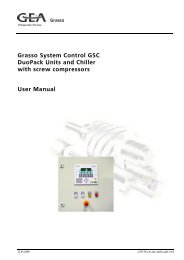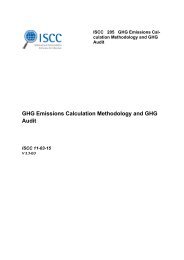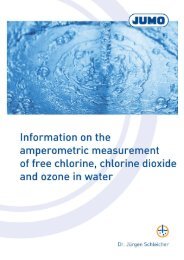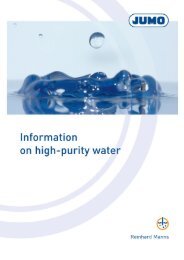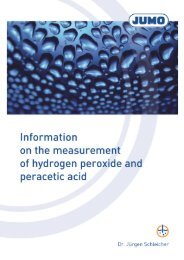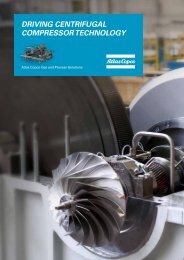FAS622en_pH measurement
Create successful ePaper yourself
Turn your PDF publications into a flip-book with our unique Google optimized e-Paper software.
4 Applications<br />
4.3.2 Decontamination<br />
Cyanide decontamination<br />
The removal of cyanides from waste water is another example of the industrial application of a <strong>pH</strong><br />
<strong>measurement</strong>. Waste water containing cyanides is treated in continuous-flow treatment plants.<br />
These plants consist of the following components:<br />
- reactor (vessel)<br />
- mixer (stirrer)<br />
- <strong>measurement</strong> and control system (acquisition of various parameters)<br />
- dosing unit (valves and pumps)<br />
- chemical reservoir (stock container) and<br />
- concentrate reservoir (intermediate storage)<br />
Cyanide and the parent compound hydrogen cyanide (HCN) are extremely toxic substances. The<br />
reason for the toxicity is that both substances form very stable aggregates with ferments (enzymes)<br />
of the human organism that contain heavy metals, so that the action of the ferments is inhibited.<br />
For this reason, it is absolutely essential that the cyanides are removed from the waste water. The<br />
aqueous solution of hydrogen cyanide is generally better known as prussic acid.<br />
Decontamination of the cyanide-containing waste water takes place in partial reactions that are<br />
described below:<br />
- oxidation of the cyanide to cyanogen chloride<br />
- hydrolysis of the cyanogen chloride to cyanate<br />
- oxidation of the cyanate to carbonic acid and nitrogen.<br />
Decontamination<br />
As already explained at the beginning, the decontamination is carried out in continuous-flow treatment<br />
plants. Here, the waste water is first of all fed into the reactor. For the decontamination, a <strong>pH</strong><br />
value of at least <strong>pH</strong> = 10 is required, and this is adjusted here. In the acid <strong>pH</strong> ranges, hydrogen cyanide<br />
is formed.<br />
When sodium hypochlorite solution is added, the cyanide is converted to cyanogen chloride (ClCN)<br />
(reaction 1). Cyanogen chloride is a similarly toxic gas with a high solubility in water (25 liter ClCN<br />
gas/liter water).<br />
In the next reaction stage, the cyanogen chloride is converted to the non-toxic cyanate (CNO - ).<br />
This reaction only occurs at very high <strong>pH</strong> values. As the progress of the first partial reaction is not<br />
<strong>pH</strong>-dependent, the high <strong>pH</strong> value is adjusted right at the beginning of the decontamination. Generally,<br />
the total reaction is carried out with a 20% excess of NaOCl.<br />
Under the conditions explained at the beginning, the decontamination is concluded within 20 minutes<br />
at most. However, the licensing authorities insist on durations of between 40 and 60 minutes,<br />
to ensure that all the cyanide was converted.<br />
In the last section, the cyanate obtained above is oxidized to carbonic acid and nitrogen at <strong>pH</strong> values<br />
around 7-8. This reaction is completed within 30 minutes (reaction 3).<br />
When the decontamination is completed, it is followed by further stages of neutralization, sedimentation,<br />
filter press and final inspection, before the purified waste water is fed into the sewer system.<br />
Reaction 1:<br />
2 CN - + 2 OCl - + 2 H 2<br />
O 2 ClCN + 4 OH -<br />
(6)<br />
cyanogen chloride<br />
38 4 Applications JUMO, FAS 622, Edition 04.07



